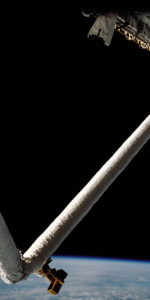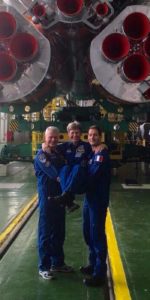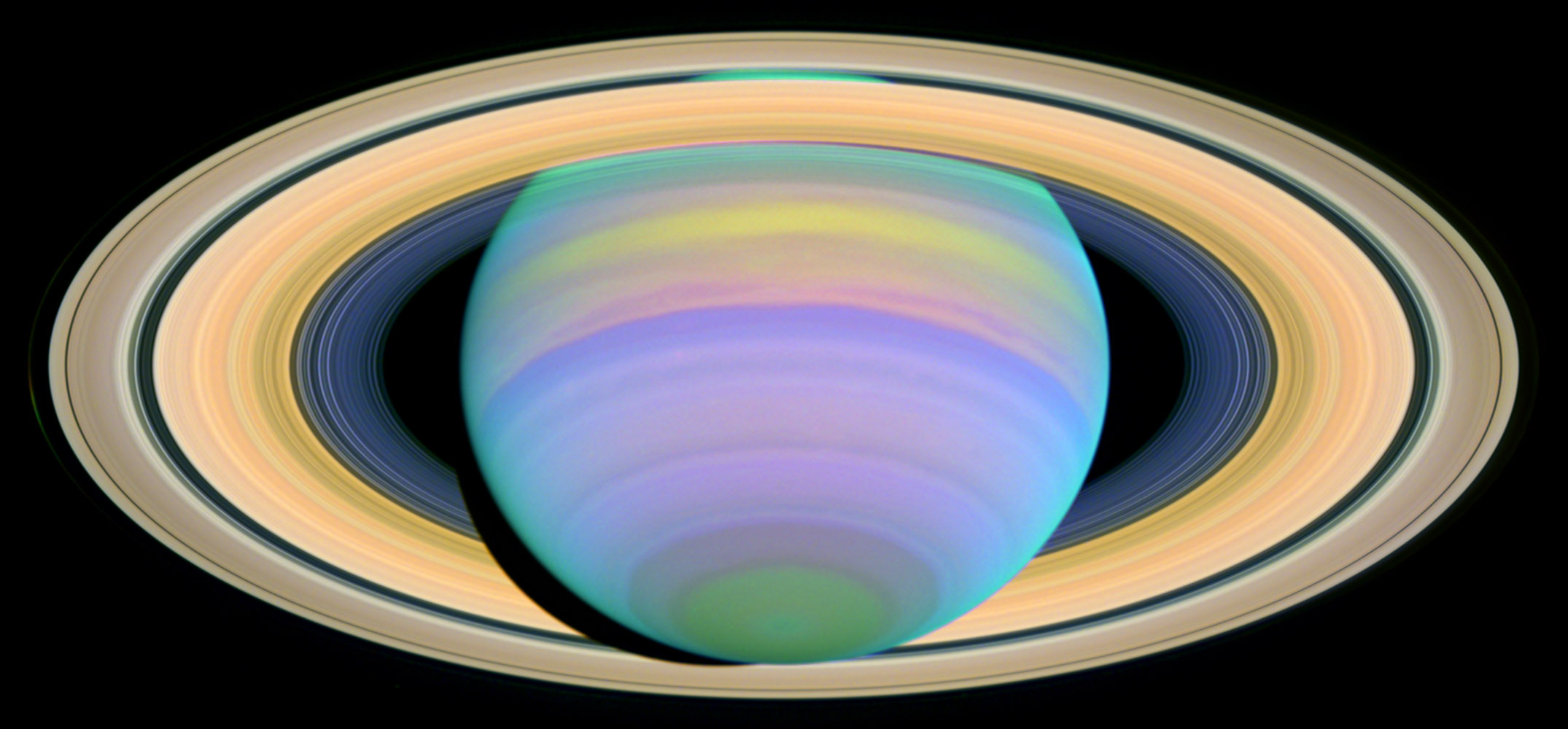
“-‘Dad, come and see this, quick!’ Taylan exclaimed enthusiastically while once more peering through the telescope that his father has bought for him. Now, he was gazing at distant Saturn which seemed to float ethereally at the center of the eyepiece, like a big ball of pale yellow-orange color amidst the velvet-black background of space. Circling around it were the planet’s famous system of rings, which to little Taylan’s eyes appeared to sparkle like an assortment of celestial diamonds, bathed in the light coming from the faraway Sun. They reminded him of the colorful hula-hoops that girls twirled around their waists in the park on lazy Sunday afternoons.
But what was most fascinating for young Taylan however was the fact that this whole spectacle appeared to have such a distinct feeling of depth to it! It gave him a unique sense of a three-dimensional reality that was quite different from the amazing, colorful but ultimately ‘flat’ photographs of the ringed planet that he used to marvel at with his father in many astronomy books”.
‘Taylan’s Cosmic Journey’ – Leonidas Papadopoulos
————————————————–
One of the unpleasant consequences of living in large cities and suburban areas is the lack of connection with the splendor of the pristine, black night sky that one can experience first-hand today only from remote locations that are far away from the urban sky glow of metropolitan areas and other sources of artificial light. Thus, for many their exposure to the wonders of the night sky can only come from astronomy books that are filled with colorful, impressive images of planets, stars, galaxies, and other denizens of the celestial zoo. Yet, as impressive and awe-inspiring as these images may be, they are limited by the nature of the printed medium through which they are presented, conveying two-dimensional portrayals of three-dimensional celestial objects.
For anyone that has looked up at the night sky while peering through the lens of a powerful enough telescope, the spectacle is an entirely different experience altogether. Despite the fact that the radiant impressive colors of celestial objects which are showcased in astronomy magazines and books are nowhere to be seen, the telescope eyepiece nevertheless reveals a unique sense of depth and motion when looking at close enough objects like the planets of our Solar System. Even a casual glance at deep-sky objects like stars and nebulae (which through any telescope mostly appear ‘flat’ against a two-dimensional, static background) can be seen under a different light. I have vivid memories of the first time I looked at Vega, the brightest star in the constellation of Lyra, through the large refracting telescope at the National Observatory of Athens in my home country. Appearing bright and impressive in the middle of the field of view while bathed in a soft hues of white-blue light, Vega didn’t look anything more than a luminous flat disk that was pasted in front of other more distant and equally flat stars. Yet, what captivated me immediately in that moment was this unmistakable sense of depth that registered in my eyes – a newfound transcendental feeling that I was somehow floating through a three-dimensional space, somehow bridging the 25 light-year gap that separates Earth from Vega. I would find myself reflecting on these few moments by the telescope for years after the event itself, as moments of deep communion with the Universe, with something bigger than myself – moments that in a sense had an aura of spiritual awe.
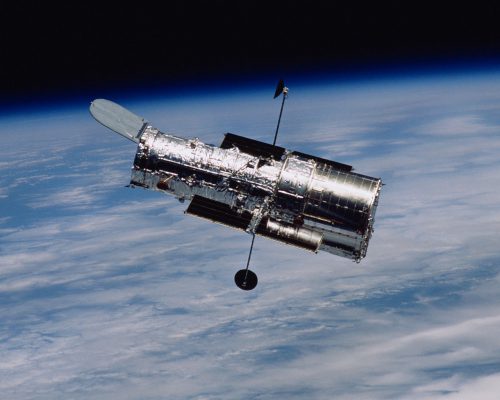
Even though this experience is ultimately a personal and subjective one, it was nevertheless triggered by the perception of depth that my eyes registered while looking through the telescope eyepiece. But from a scientific standpoint, the ability to observe and image celestial objects with this three-dimensional impression of depth is an invaluable one as well, allowing astronomers to better understand their properties like their structure, size and distance. Depth perception is an integral property of human physiology and thus of our everyday experience of the world around as. Humans, like many other animals on Earth, have their eyes placed in two different lateral positions on the head, allowing for binocular vision. In essence, this produces two different images of the same scene, seen from a slightly different angle by each eye. The human brain then processes and reconstructs these slightly different images in such a way, allowing us to have depth perception – the ability to see the world around us in three dimensions and judge the distance to any object on the surrounding environment, near or far.
As with any other aspect of human physiology, depth perception has its limits. Since the difference between the lateral position of the human eyes is approximately 6 cm, a person can perceive objects as three-dimensional ones only out to a distance of 2-3 km. Any object that is located above that distance can only be perceived as just a point of light. This ability to discern faraway objects decreases with the square of the distance, which means that in order for us humans to be able to have depth perception above that 2 km-limit, our eyes would have to be positioned proportionally further apart than what they currently are. That may not seem like a big deal on a terrestrial scale, but when it comes to studying celestial objects over astronomical distances, in order for astronomers to be able to perceive them as three-dimensional they would have to use two different telescopes located many light-years apart. This is the reason that deep-sky objects like stars and galaxies appear only as just points of light even through the most powerful telescopes – the needed binocular vision with this great distance between the two observing instruments is missing.
Fortunately, technology has advanced sufficiently enough that astronomers could now theoretically achieve the binocular vision necessary and create real-time stereoscopic 3-D images for objects that are much closer to home, like the planets and moons in our Solar System. This exciting prospect has been the subject of a recent study that was published on arxiv, by a team led by Dr. Joel Green, project scientist at Space Telescope Science Institute, in Baltimore, MD. More specifically, the authors of the study propose using NASA’s Hubble Space Telescope in tandem with the upcoming James Webb Space Telescope which could allow them to image several Solar System targets in three dimensions.
The Hubble Space Telescope has been operating for more than 25 years in low-Earth orbit at an altitude of approximately 550 km, while returning ground-breaking, revolutionary science in the process which forced us to redefine our connection to the Cosmos like no other scientific instrument before it. For its part, Hubble’s successor, the James Webb Space Telescope, which is on track to meet its planned launch date on October 2018, is scheduled to be placed in an elliptical orbit around the second Sun-Earth Lagrange point, or L2, nearly 1,500,000 kilometers away from Earth. From this vantage point, the James Webb will use its four science instruments in order to supplement and expand on the observations made by its scientific predecessor, by looking deep into the Cosmos in infrared wavelengths, contrary to Hubble which has been optimised to look in visible and ultraviolet light. This way, astronomers will be able to observe unique cosmic phenomena that have been beyond Hubble’s capabilities. Furthermore, Webb’s much larger primary mirror will allow for an even deeper view into the Universe than ever before, to an era when the latter was just a few hundred million years old.
In addition, the great physical separation between the two telescopes in space (the one in low-Earth orbit and the other well beyond the orbit of the Moon), presents a unique opportunity for astronomers to try to capture many physical processes on planetary objects in the Solar System in real-time in 3-D. “When combined, NASA’s Hubble and James Webb Space Telescopes are capable of a unique observation: true stereoscopic 3D imaging, in the optical/near-IR overlap regime”, write Dr. Green’s team in its study. “Separated by 1.5 million kilometers, we can produce 3D images of asteroids, comets, moons and planets in our Solar System, for a variety of astronomical applications”.
AmericaSpace recently spoke with Dr. Green as well as Nobel prize-winning astrophysicist Dr. John Mather, NASA’s Senior Project Scientist on the James Webb Space Telescope, about this very fascinating, yet technically challenging proposition from Dr. Green’s team, and discussed NASA’s next big space observatory in general. Below is an edited excerpt from our correspondence.
- Dr Green and Dr. Mather thank you for taking the time to answer a few questions for our readers on AmericaSpace. I’d like to start by asking you about the proposal to combine the unique views of both Hubble and the upcoming James Webb space telescopes, in order to produce stereoscopic, 3-D images of celestial objects in the Solar System. What are the scientific gains from utilising such a concept and how did the idea originally came about?
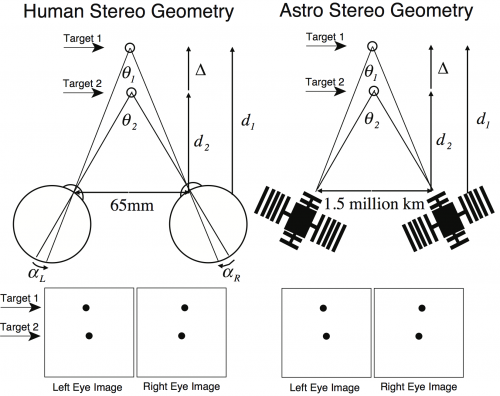
Dr. Green: My thoughts on the concept were actually inspired by an audience Question and Answer session at the Udvar Hazy/Smithsonian Air and Space Museum! Dr. Jennifer Wiseman, senior Hubble project scientist at NASA’s Goddard Space Flight Center was answering a question during the 25th Anniversary celebration for the Hubble Space Telescope (in April 2015) about whether telescopes can “zoom.” She pointed out that telescopes don’t have a zoom function because they are always focused at infinity – that is, that every object astronomers look at is so distant that the concept of optical zoom does not apply.
But she also identified an important caveat, that nearby objects in our own Solar System – planets, moons, asteroids, and comets – are sometimes large enough and close enough to apply a zoom. After the talk, we discussed the general concept of “binocular” images and the idea germinated for a while. A few months later, I was talking with a friend of mine, Prof. Johannes Burge, a vision scientist at the University of Pennsylvania in the psychology department. We realized we could extrapolate human perception to the eyes of the two sharpest telescopes, the Hubble and James Webb Space Telescopes, which will likely be in space together for at least 2 years, separated by a million miles, to achieve incredible depth perception in both pictures and movies of Solar System objects.
- Stereoscopic imaging is nothing new in space exploration, with many of our robotic emissaries utilising this technique, from NASA’s Opportunity rover on Mars to the Sun-imaging Solar TErrestrial RElations Observatory (STEREO) satellites to name just a few. What advancements will Hubble and the JWST specifically bring to this field?
Dr. Green: So why would we want to do this? Besides the fact that it’s a really cool concept, this technique can reveal the three-dimensional structure of objects and events in our Solar System. If a comet were to impact Jupiter (like Shoemaker-Levy in 1994), we could use this technique to follow the trajectory of the ejecta and calculate the detailed physics of the collision, which in this example could reveal information about both the comet and Jupiter. Another example: we could observe the thick cloud patterns of Mars or Jupiter and use 3D information to better model their structures. A third idea is focuses on Saturn’s majestic rings and their ripples that swirl around the system.
Because Hubble and Webb are continuously operating telescopes that can see the entire Mars or Saturn system in a single snapshot, it would possible to use this technique on short notice – when a particularly dramatic event is occurring – or to make a longer term observational “movie” which would be impossible from up close.
Dr. Mather: It’s hard to be sure until we do it, that’s why astronomy is an observational science. Who knew Pluto would be so much more interesting than a round rock dwarf planet? It seems unlikely to me that we’ll get a new fundamental discovery from this method. But letting people see with their own eyes in 3D really does help us find new patterns and understand the real shapes of objects better. Since the outer planets have very thick atmospheres with many cloud layers we may anticipate that some surprises will turn up. Also, we can make these observations directly instead of having to synthesize them in the computer from other information. That’s clearly an improvement.
- The JWST has a much larger 6.5-m diameter primary mirror than Hubble’s 2.4-m one, which gives it a much larger light-collecting area as well as spatial resolution compared to the latter. In addition, the JWST can observer primarily in the infrared part of the electromagnetic spectrum, whereas Hubble is optimised at looking at ultraviolet and visible wavelengths. What limitations do these different technical specifications pose to the telescopes’ joint stereoscopic imaging ability and what can we realistically expect to see?
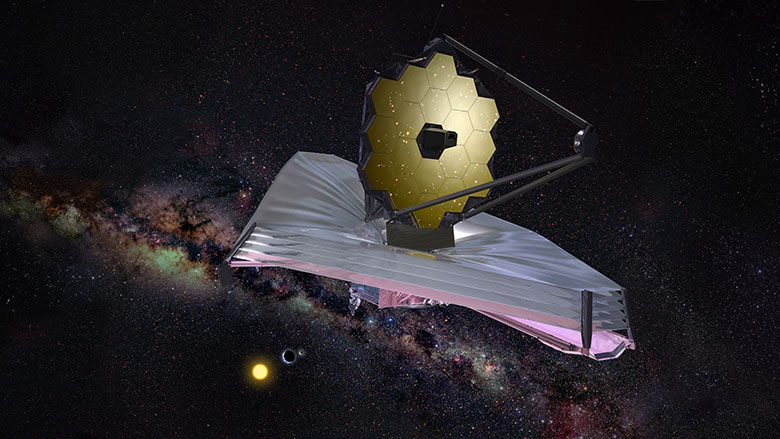
Dr. Green: There are many limitations on this technique. First, JWST cannot look directly toward or directly away from the Sun, because it has to keep its «umbrella», or sunshield, between it and the Sun. So the planets are only viewable at certain times of year, and never exactly at opposition. But this is only a minor problem for most of the observations, as long as we are flexible with scheduling. The light-collecting power is very important for fainter objects, but for every case where 3D parallax can be obtained, the object would definitely be bright enough that both Hubble and Webb are up to the task. The key is to take images in the frequency overlap between Hubble and Webb – approximately between the «red» end of visible light, and the near-infrared, generally using Hubble’s Wide Field Camera 3 and Webb’s NIRCAM instruments.
There are only a limited number of objects and moons that would be doable this way (a few of which we discuss in the paper itself), but some Near Earth Objects, comets, impacts, and moons are within the realm of possibility, particularly within the closer parts of our Solar System.
Dr. Mather: I think the Green et al. paper is right about this. After all the formulas are fully appreciated the perspective will still be that Jupiter and Saturn are far away: they will look round but it will not be so easy to see their cloud layers in 3D.
- Can we expect to get stereoscopic images with the JWST of objects beyond the Solar System, like extrasolar planets? What are the prospects of imaging nearby and distant planets around other stars in general? In this regard, what advances will JWST bring to exoplanetary science?
Dr. Mather: No, we can’t get real stereo images outside the Solar System with any equipment we have today or can imagine in the future. But we can certainly interpret the images we get into 3D and then show them to ourselves with 3D viewing software. For instance, from parallax observations we know the distances to the nearest stars, and with GAIA we know the distance to billions of them. So we can really make a 3D image that shows the stars as though our eyes were billions of miles apart instead of just 3 inches. But this doesn’t work well for anything but stars.
About exoplanets, we can’t see the little ones like Earth directly with JWST; we will need bigger and better equipment like the HabEx or the LUVOIR being studied now in preparation for the next National Academy Decadal Survey in 2020. But we can see the bigger brighter ones, especially if they are far enough from their stars. And we can also see a star blink a little when a planet passes in front of it. Since some of the starlight passes through the planet’s atmosphere on its way to the JWST, we can analyze the constituents of that atmosphere and look for gases like water vapor. It’s called transit spectroscopy and we will definitely try it with JWST. We already have a big catalog of targets and we’re about to find more with the TESS mission. With luck we might find that there are water planets out there, or even planets with oceans and continents.
- The JWST is nearing completion and is essentially on its last leg of rigorous testing before being launched in October 2018. In your opinion, what have been some of the most daunting engineering and programmatic challenges that had to be overcome in order for JWST to reach this point?
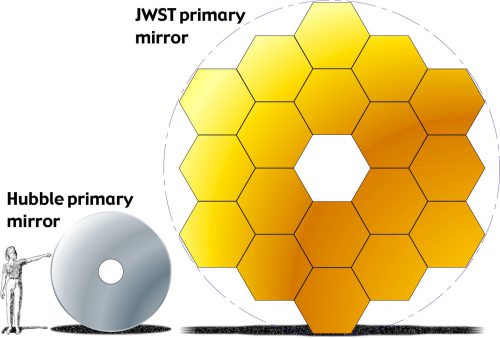
Dr. Mather: The obvious engineering challenges are the ones you can see: a very big mirror made of 18 pieces to be adjusted after launch; a sunshade as big as a tennis court; and deploying the whole thing without a hitch. The programmatic challenge was of course the budget and schedule; in the early years people were optimistic and had not yet seen how hard the test program would be, and how hard we would have to work to keep down the risks of failure. But 5 years ago we made a new plan and budget, and we have stuck to it ever since. Congress agreed to it and they sent the money as they said they would.
- Due to its scheduled location at the L2 Lagrange point 1.5 million km from Earth, the JWST is not meant to be serviced and upgraded like the Hubble telescope which operated in low-Earth orbit. Nevertheless, could a future crew on a deep-space mission onboard NASA’s Orion spacecraft be able to do any basic maintenance to the James Webb?
Dr. Mather: In principle they could go there, but there are no user-serviceable parts inside, and there are sharp edges that would be dangerous for an astronaut’s space suit. When we designed the JWST there was no possibility of servicing so we didn’t design for it. There’s been talk of refilling the fuel tanks, which might be feasible robotically, since the valves and pipes are near the surface. We are putting a recognizable pattern on the warm end of the observatory so that future hardware could know how to dock with it. But our job now is to make sure we don’t need to do this. (Congress definitely would like us to make future big observatories after JWST serviceable.)
- The Hubble space telescope has been going strong for more than 25 years, returning revolutionary science to astronomers back on Earth in the process. How is the health of the telescope at the moment and what are the prospects of it operating past the James Webb’s launch date in 2018?
Dr. Mather: From what I hear the HST is in excellent health and nothing is showing imminent signs of wearing out. I think it’s very likely there will be overlap of several to many years.
- It is no exaggeration to say that for more than 25 years, Hubble has been a deeply transformative space observatory not only for astronomers and space scientists, but for the public at large as well. What do you think that JWST’s legacy in this regard will be and how might it affect the public’s perception of the Cosmos?
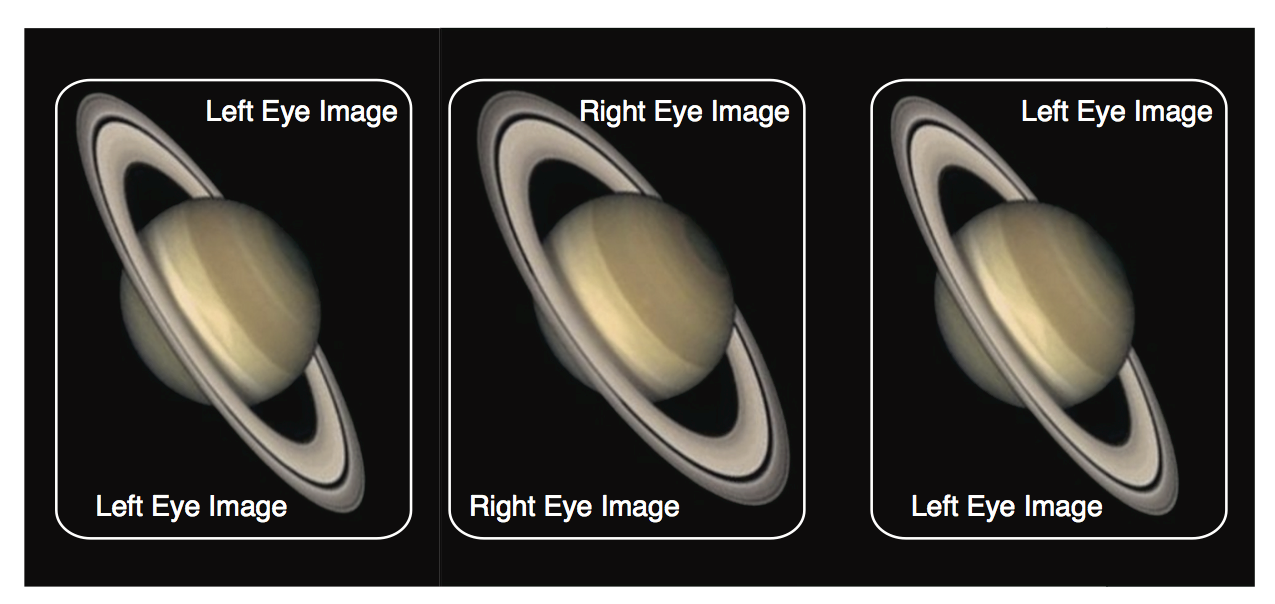
Dr. Green: A lot of people will want to compare the two, but what Webb will truly show is how limited our «visible light» eye picture of the Universe truly is, and all of the hidden mysteries we can solve by expanding our sight.
Dr. Mather: You can only be first once, and Hubble was first in space with its giant mirror and cameras, especially powerful after 5 visits by astronauts for upgrades and repairs. But JWST is so much more powerful and operates at such different wavelengths that every astronomer expects magnificent pictures and startling discoveries from JWST too.
With all the strides in our understanding and perception of the Cosmos that had taken place in the last couple of decades with the help of ground-based as well as space-based telescopes like Hubble, the phrase that we’re living in a golden age for astronomy, has become something of cliché. Yet, I have many times found myself wondering, in eager anticipation for the launch of the James Webb Space Telescope (our next big eyes to the Universe), what will our next cosmic insights and advances might be. The answer to this question lies just a couple of years into the future.
Be sure to “Like” AmericaSpace on Facebook and follow us on Twitter: @AmericaSpace
.




